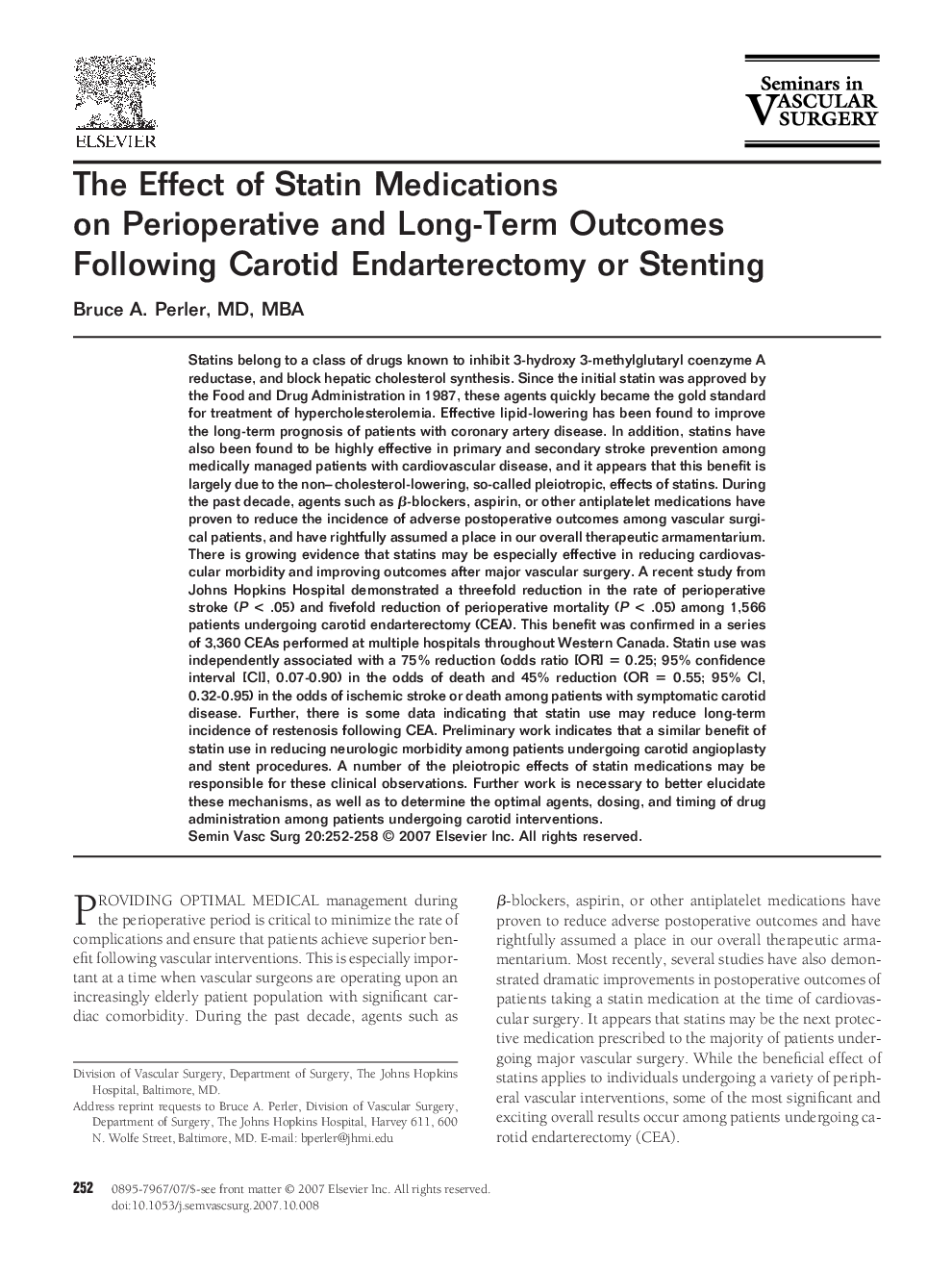| Article ID | Journal | Published Year | Pages | File Type |
|---|---|---|---|---|
| 3026319 | Seminars in Vascular Surgery | 2007 | 7 Pages |
Statins belong to a class of drugs known to inhibit 3-hydroxy 3-methylglutaryl coenzyme A reductase, and block hepatic cholesterol synthesis. Since the initial statin was approved by the Food and Drug Administration in 1987, these agents quickly became the gold standard for treatment of hypercholesterolemia. Effective lipid-lowering has been found to improve the long-term prognosis of patients with coronary artery disease. In addition, statins have also been found to be highly effective in primary and secondary stroke prevention among medically managed patients with cardiovascular disease, and it appears that this benefit is largely due to the non–cholesterol-lowering, so-called pleiotropic, effects of statins. During the past decade, agents such as β-blockers, aspirin, or other antiplatelet medications have proven to reduce the incidence of adverse postoperative outcomes among vascular surgical patients, and have rightfully assumed a place in our overall therapeutic armamentarium. There is growing evidence that statins may be especially effective in reducing cardiovascular morbidity and improving outcomes after major vascular surgery. A recent study from Johns Hopkins Hospital demonstrated a threefold reduction in the rate of perioperative stroke (P < .05) and fivefold reduction of perioperative mortality (P < .05) among 1,566 patients undergoing carotid endarterectomy (CEA). This benefit was confirmed in a series of 3,360 CEAs performed at multiple hospitals throughout Western Canada. Statin use was independently associated with a 75% reduction (odds ratio [OR] = 0.25; 95% confidence interval [CI], 0.07-0.90) in the odds of death and 45% reduction (OR = 0.55; 95% CI, 0.32-0.95) in the odds of ischemic stroke or death among patients with symptomatic carotid disease. Further, there is some data indicating that statin use may reduce long-term incidence of restenosis following CEA. Preliminary work indicates that a similar benefit of statin use in reducing neurologic morbidity among patients undergoing carotid angioplasty and stent procedures. A number of the pleiotropic effects of statin medications may be responsible for these clinical observations. Further work is necessary to better elucidate these mechanisms, as well as to determine the optimal agents, dosing, and timing of drug administration among patients undergoing carotid interventions.
